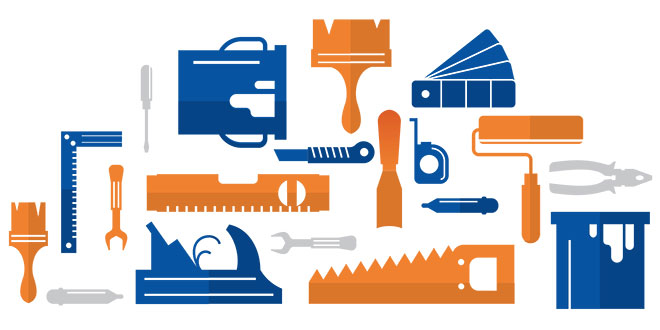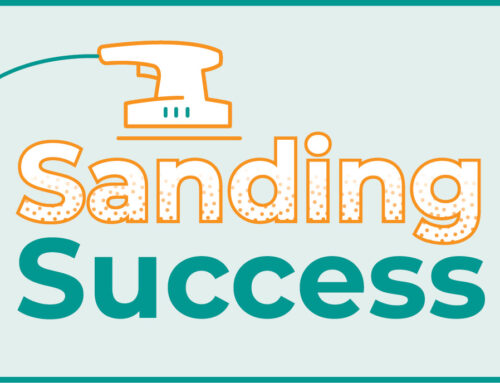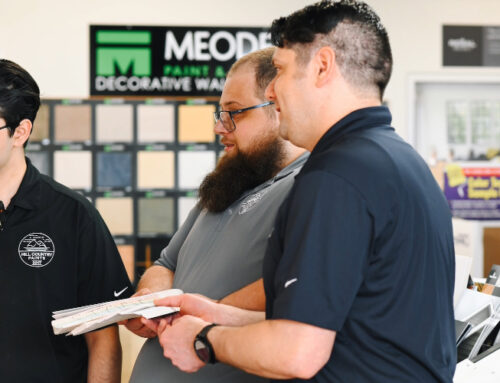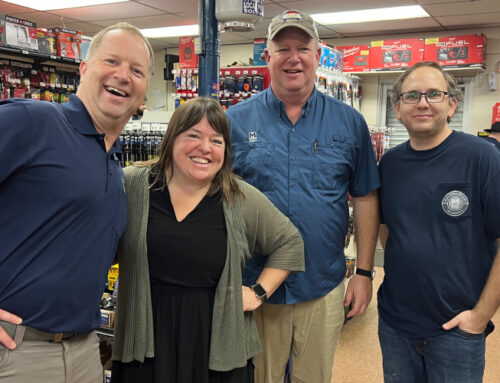When a customer comes into your store, whether they are a pro or a DIYer, it’s important to be able to serve all of their needs. Sometimes that task is as simple as mixing a gallon of paint, but the key to developing a reputation as a full-service shop with knowledgeable employees is to make sure their project is really that simple. Understanding the broad scope of product and project knowledge isn’t something that develops overnight, or even over the first several months of working in a paint store. As trends change and as manufacturers develop new products to solve painting challenges, your customers will rely on you and your staff as their source for the tools that can make their projects easier. On the following pages, review tips for delivering product and project knowledge to your customers even when you can’t be right there next to them. Also, get insights into how knowing your customers’ priorities can be key to making the sale.
Get To Know Your Customers
The Home Improvement Research Institute regularly surveys home improvement shoppers’ buying habits across different categories to identify trends and make predictions about the state of the industry. In these surveys, which are developed into Product Purchase Tracking Study, shoppers are asked to rank their priorities when making purchases, which HIRI translates into “attitudes.” These attitudes include: Cost Concerned, Information Seeker, Environmentally Conscious, Home Investor, Connectivity Minded, DIY Driven, One-Stop Shopper and Retail Reliant.
When talking to a customer about their project and what their goals are, think about how they may fit into these categories and how you can more accurately serve them based on what you know.
For example, a DIY customer may come in and say, “I want to repaint my kitchen, but I don’t want it to cost a lot and I don’t know where to start.” It’s immediately evident they fall under the Cost Concerned attitude, but there may be an opportunity to focus on their Retail Reliant attitude to be sure they leave with everything they need. People who are Retail Reliant need guidance from a knowledgeable sales associate, so you should focus on the quality of the products they need and how it will save them money on a project long term.
To best serve One-Stop Shoppers, take notes while they are talking about their project and ask them follow up questions as necessary. For instance, if they are repainting their bathroom and haven’t mentioned waterproof caulk or sealant, that’s an entry point to be sure they understand what they need to complete the project accurately. It also saves them a return trip to the store—or a competitor.
Listening to your customers and understanding the scope of their project are the only ways you can be sure they are leaving prepared and informed.
The Final Piece
One of the most challenging parts of making a sale is the final step: Asking the customer for the sale. This is especially true for high-dollar sales. The key to getting through any nerves or missteps with this part of selling is to know you have gathered all necessary information to set your customer up for success. The final key is to ask for the sale, as simply as saying, “We’ve checked off all the items on your list. Are you ready to check out?”
4 Selling Tips That Work Hard So You Don’t Have To
Think Outside the Box—Literally.
Display tools or kits where customers can see them and touch them. If you’re not comfortable having them out on display, make them available as requested. If someone asks for help, have a display version ready to go for them to see. Then you can disinfect and return to storage until the next customer comes along.
Use “The Silent Sales Associate.”
Cross-merchandising provides a visual reminder for customers and employees of the add-on items that might be needed to finish a project. Endcaps are a prime place to merchandise projects. While you may not be able to merchandise all of the products used in a project on an endcap, you can include project starters and a few key tools or materials along with signage.
Host a Zoom Classroom.
What’s one of the first places people go to research a project before they ever get to a store? YouTube. So put yourself in your customers’ homes before they come to you. While we’re waiting for the chance to host live events again, host a virtual event showing products in action. Be sure to record and share on social media to reach the customers who couldn’t attend live.
Go Big With Signage.
Make sure your salesfloor is leading people to the right places even when you can’t be right there to guide them. Use overhead signage, shelf tags and aisle violators like blade signs to give customers tips for other products they may need that live in another area of the store or require assistance from a sales associate.







